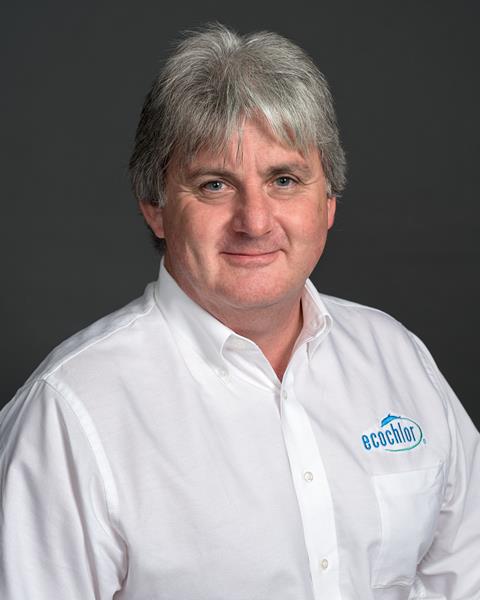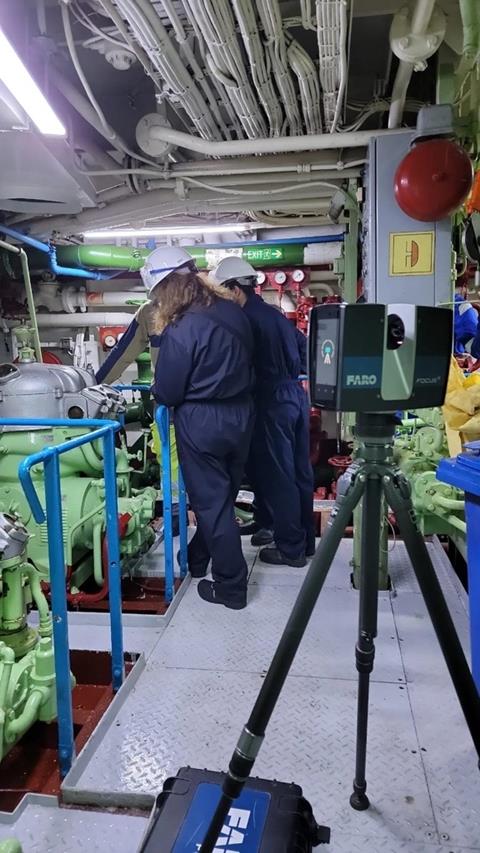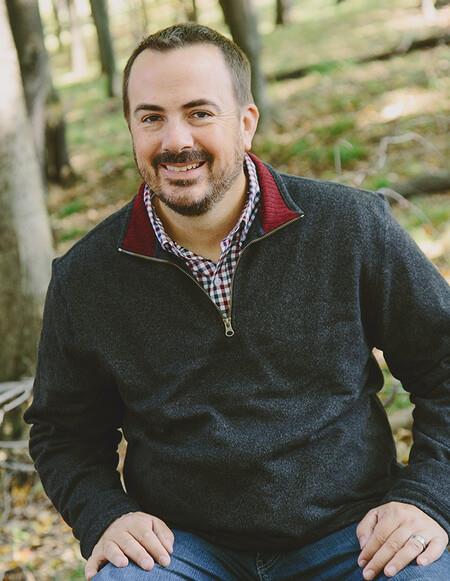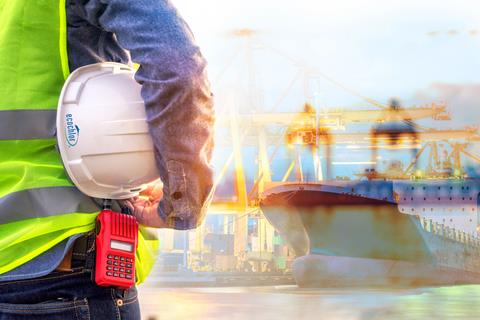In June 2022, the IMO’s Marine Environment Protection Committee (MEPC) 78th session agreed in principle to develop a Ballast Water Management Convention Review Plan after a review of the experience-building phase. The Motorship spoke to key stakeholders to get their views on where the issues lie.
In 2017, MEPC 71 established the experience-building phase to carry out a systematic and evidence-based review of the Convention. The World Maritime University was engaged to prepare a data analysis report (MEPC /1), and 21 flag states submitted data on 16,199 ships. Other data sources included 38 administrations, two Port State Control Memorandums of Understanding and nine additional stakeholders. 758 accidents and defects were reported, along with seven additional safety incidents related to ballast water management.

Ecochlor CEO Andrew Marshall
Of the 123 detailed sampling events and analyses reported by administrations, 68% were compliant with the D-2 standard which specifies the maximum number of viable organisms allowed to be discharged. Failures were most common for the ≥ 50μm organism size class. In discharges compliant with the D-2 standard submitted by Administrations, concentrations of organisms were found to be significantly below the discharge standard, with averages below one /m3 for the ≥ 50μm size class and two /mL for the 10 – 50μm size class. Conversely, 61% of failures in the ≥ 50μm size class were failures greater than 10 times the discharge limit.
Approximately two-thirds of systems (BWMS) using active substances met the maximum allowable dischargeconcentration requirement for residual oxidants during compliance testing. 12.5% of ships’ crews reported difficulty with operation or maintenance.
Maintenance and training
Jad Mouawad, CEO of Mouawad Consulting, believes that maintenance and crew training are the two most important areas that can improve the reliability of BWMS and their performance. He is also concerned about the pace of retrofits and the fast and incorrect installations that are being done, including lack of training of the crew and later maintenance follow up. “The remedy is simple, proper engineering and supervision of the retrofit, including crew training during commissioning, and also after a few weeks or months have passed to see if all is still working fine and what questions crew may have.”
He sees crews who are not aware of the limitations of the BWMS installed even though the system design limitations are clearly defined on the type approval certificate. Important training topics include flow rates allowed, salinity limitations, holding time, total residual oxidants (TRO) levels expected and the minimum maintenance expected, including any requirements for fresh water flushing. “Those are details that are easy to fix with a one-day training onboard and that willsave a lot of downtime and Port State Control trouble for the crew.”

Jed Mouawad of Mouawad Consulting noted that the current pace of retrofits was leading to inadequate crew training with potential subsequent maintenance implications
Mouawad notes that TRO, flow meter, pressure, temperature, and salinity sensors must be checked at least once a year. Although minor, a fault in any of these sensors will lead to incorrect operation of the BWMS, alarms, and contaminations – situations that can have severe consequences for the ship, against a cost that is almost non-existent. “In other words, this is the definition of low hanging fruit. Fix those small things, and we will see a huge increase in effectiveness and uptime of BWMS worldwide.”
Ecochlor CEO Andrew Marshall would like to see the IMO get more input from vessels regarding their ballasting operation experiences from beginning to end – not just the bad, but the good experiences too. “This information is critical to shipowners that are still seeking systems for their vessels. The IMO said at MEPC 78 that only about 15,000 vessels submitted their experiences regarding ballasting operations for this report. We need more data on which systems are truly the most reliable and easy-to-use so that owners can make the best-informed decisions on their purchases.”
Marshall says the latest feedback in the industry has been, in general, fairly optimistic. There has been an increase in systems that are installed and working and better training and service programs offered by the top-tiered manufacturers still in the marketplace. “It is not surprising to me that there continue to be issues with filers as well as some of the more problematic components, such as TRO sensors, but I think we are all moving forward in the right direction.”
He says shipowners need to pay attention to a system’s record of reliability, ease of use and if the equipment manufacturer has a global and responsive service team in place. This is key to compliance, he says, and an inexpensive system is no bargain in the long run if the vessel is facing Port State Control fines or delays every time they enter a port.
Commissioning testing
BWMS commissioning testing became mandatory from 1 June 2022, and Marshall believes they will demonstrate the importance of installation oversight by the equipment manufacturer and much more emphasis on crew training, particularly when ballasting operations are undertaken in waters that are not in the range of the optimal conditions for that particular treatment technology.
Mark Riggio, head of Marine at Filtersafe, says the main takeaway from the experience building phase is that systems work. “The submitted data indicated that in nearly 99% of all vessel inspections, no deficiencies were issued and most of the issued deficiencies (more than 70%) were because of the Ballast Water Record Book. For vessels where ballast was tested, it was found that exchange (D-1) was not equivalent to treatment (D-2) so when systems are bypassed, ships face a significant risk of contamination and failing a discharge test. This data continues to drive the conversation on challenging waters.”
Riggio believes that the most valuable experience being gained from commissioning testing is in diagnosing BWMS issues and understanding how crews can be trained to prevent them. “It has provided real-world proof of what we have long been arguing – that today’s technology works reliably if install it correctly and you know how to use it. We are also learning about the significant risks posed by the larger (>50 um) organisms, which account for most of the testing failures. Using a high-quality filter and not bypassing the BWMS are critical to ensuring that a vessel is able to pass a D-2 discharge test.”
Scope for improvement
He believes that there are a few areas of the Conventionwhere review is appropriate. The Convention needs to be clearer about where the responsibility for selecting an appropriate system lies. Allowing the bypass of a system in challenging water creates a huge responsibility gap that allows for the selection of a system with low system design limitations.
“The convention needs to reinforce that operators must treat the water in sediment-rich areas to the best of their BWMS /or filter’s ability. Therefore, those with low performing systems – with low system design limitations – will have to spend longer treating ballast water in these challenging conditions or may have to leave the port all together. When a system’s limitations can define challenging water conditions rather than the water itself, there is no incentive to use systems appropriate for where the ship trades. We expect the Convention to clamp down on BWMS bypassing, leaving it only as a last resort, as it’s contrary to the environmental aims of the Ballast Water Management Convention.
“There also ought to be a change to BWMS certification. There needs to be a cleaner mechanism by which you can test improvements to your system so that we can continue to evolve. The way ballast water treatment works today, you have to completely design your system before you test it, and then once you start testing it, you can’t change it anymore. There is a significant financial burden to innovation that is stalling the progress of improving BWMS.”

Mark Riggio, head of Marine at Filtersafe
Ed Wroe, Technical Manager, INTERCARGO, says: “Although there has been some improvement over the last couple of years, with some systems performing better thanothers, there is a significant number of owners that are still experiencing problems, and the systems not performing as they should. It’s probably fair to say the support from the manufacturers has generally improved. However, this isn’t the case for all manufacturers with service support in some cases being reported as poor.
“Additionally, spare parts availability is still poor. Some BWTS manufacturers continue to be ill-prepared to support vessels engaged in worldwide trading, such as bulk carriers.”
Another issue is that while the vessels are classed and certified for worldwide trade, some of the systems aren’t designed for this, and many bulk carrier and other ship type operators experience problems in areas with challenging water quality. However, this issue is currently being discussed at the IMO, and Wroe is optimistic that a suitable solution will be found.
Wroe says the experience building phase was necessary for all stakeholders. From a shipowner’s point of view, taking into account disruption caused by the pandemic and ongoing issues with the systems, it’s also good that it will most likely be extended, he says. Whether or not to extend it will be further considered by the IMO.
Wroe also believes that it’s very important for regulators to take a holistic approach to regulations. “On one hand shipping is trying to decarbonise which in the short term to mid-term (or at least until carbon free fuels are available) will mean /operators finding efficiencies and ultimately using less power, but on the other hand regulations such as the Ballast Water Management Convention effectively require vessels to use more power and thus produce more emissions. We now have the paradox of one environmental regulation potentially having a negative effect on another environmental regulation. For larger vessels and systems, the extra electrical power needed is not insignificant and therefore CO2 emissions are not negligible.”
The risks of biofouling
William Burroughs, CEO of Freedom Ballast, says that commissioning testing for BWMS retrofits on mid-life vessels can uncover non-compliance threats based on the conditions of the vessel’s pumps, piping, valves, and tank cleanliness. Extensive biofilm and biofouling inside the vessel’s water ballast system, including established colonisation, can put the vessel at risk of non-compliance even though the BWMS has been installed properly and is capable of properly treating the uptake ballast water.

William Burroughs, CEO of Freedom Ballast
Additionally, continued use following commissioning can allow extensive biofouling and colonisation inside the wetted ballast water filter components that can lead to continuous cross contamination at other discharge ports. Heavy biofouling and colonization in the filter and untreated piping systems could lead to inadvertent aquatic invasive species transfer by cross-contamination due to the use of the biofouled BWMS between different ports.
Burroughs says numerous unsolved challenges remain. Among them:
“Commissioning testing following BWMS installation is just the start of a life-cycle examination of the effectiveness of the ballast water treatment system that can help a vessel achieve reliable regulation D-2 compliant discharges,” he says.
Water quality concerns
INTERTANKO was disappointed that MEPC 78 was unable to reach consensus on how to deal with situations where ports have challenging water quality. Instead, the Committee focused on identification of what constitutes challenging water quality and the locations where ballast water exchange could take place. The Committee has asked for submissions to MEPC 79, and INTERTANKO members will continue to report on cases of ports with challenging water quality. To date, INTERTANKO Members have reported nearly 500 cases in the past 18 months.
The practical challenges associated with the temporary storage of grey water and treated sewage in the ballast water tanks was considered at MEPC 78, and after consideration, there was only implicit acceptance that this practice was acceptable. The issue will now be considered at MEPC 79 where a decision will need to be made by the Committee before it can proceed to issue any guidance on how the procedure should be undertaken. MEPC has requested submissions for concrete proposals on additional aspects for guidance on the temporary storage of treated sewage and grey water in ballast tanks under the Ballast Water Management Convention. This is becoming an increasingly important issue as IMO Member States unilaterally establish no-discharge zones for sewage and greywater, meaning vessels need to find ways of storing sewage and greywater for prolonged periods





